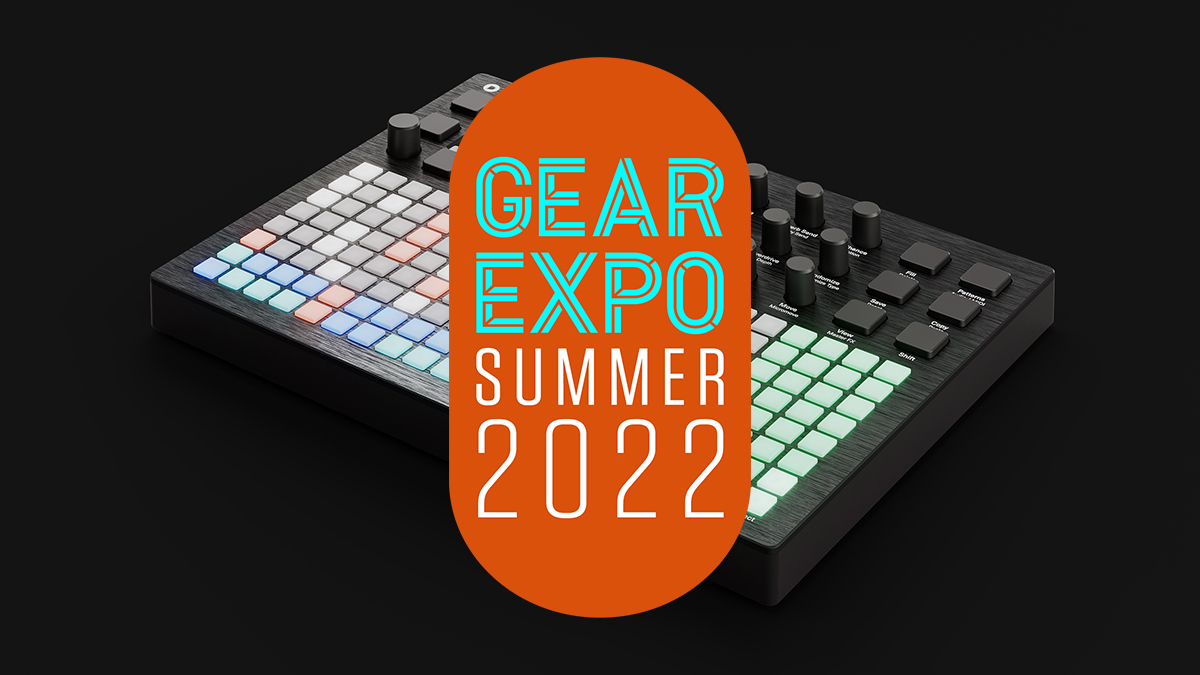
GEAR EXPO SUMMER 2022: In 2022, the notion of how we define a drum machine or groovebox is a little more flexible than it once was. Back in the early days of electronic music, hardware drum machines were simply any instrument designed to replace the role of a real drummer, using some form of synthesis or simple sample playback. Grooveboxes, meanwhile, might also throw in some simple bassline or melody sequencing.
These days, beatmakers often span a wide range of roles, perhaps incorporating elements of sampling, external sequencing, effect processing or even the full DAW-replacement levels of something like the MPC Live or Maschine+.
Case in point: look at the variety of hardware included in our 2022 round-up. Yes, there are the expected 808 or 909-alikes, but they sit alongside complex digital sequencers, DIY percussion synths and more besides, spanning from budget to top-end price points.
Polyend Play
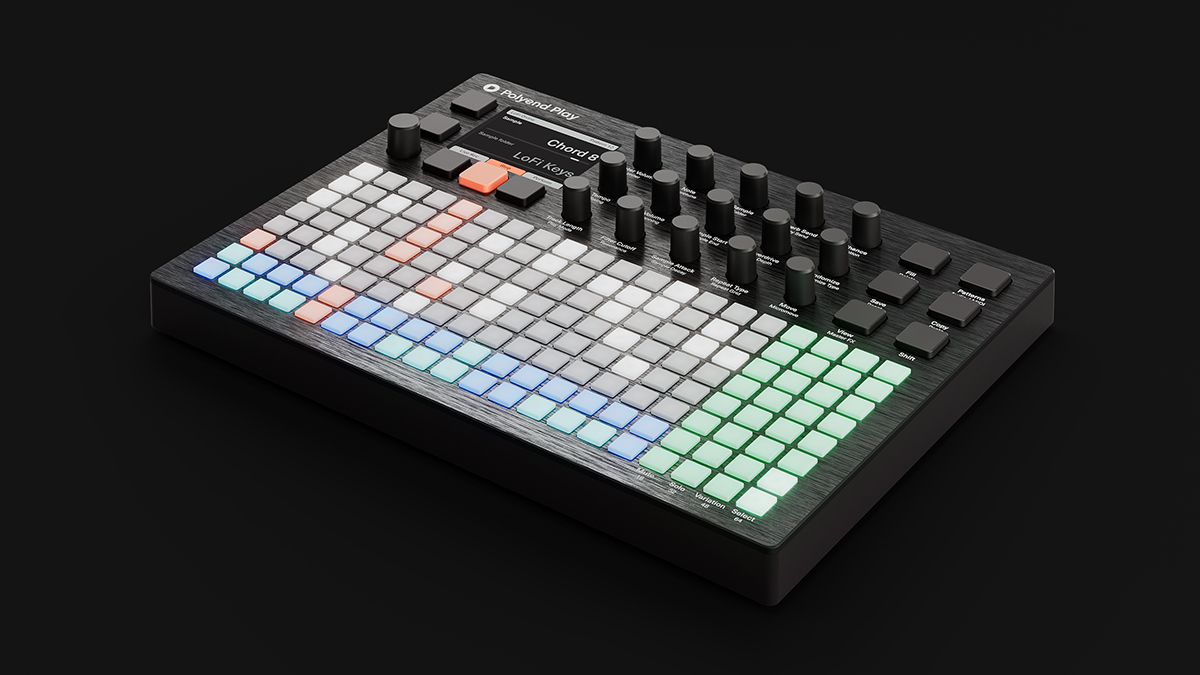
Polish developer Polyend has been going from strength to strength in recent years; from its handy Seq sequencer to the intriguing Dreadbox collaboration Medusa and, more recently, the potential cult classic Tracker. For our money, though, the company's latest groovebox, Play (799/€799), is its best release so far.
Like other Polyend instruments, Play is a digital device that leans heavily into the more leftfield and creative possibilities of modern sequencing hardware. This is a sample and MIDI sequencer with an open and flexible nature. Play’s pad grid allows users to freely assign triggers and automation, and throws in some powerful tools for working with polyrhythms, randomisation and automatic beat generation.
In sample editing and sound design terms, it’s certainly outgunned by some similarly-priced competitors – such as the Syntakt, below – but the sheer flexibility of the sequencing wins out. With the ability to simultaneously build multilayered patterns from the internal sound engine, sequence multiple external devices, and the addition of powerful performance and song modes, Play looks like a seriously creative tool for both studio and stage.
Elektron Syntakt
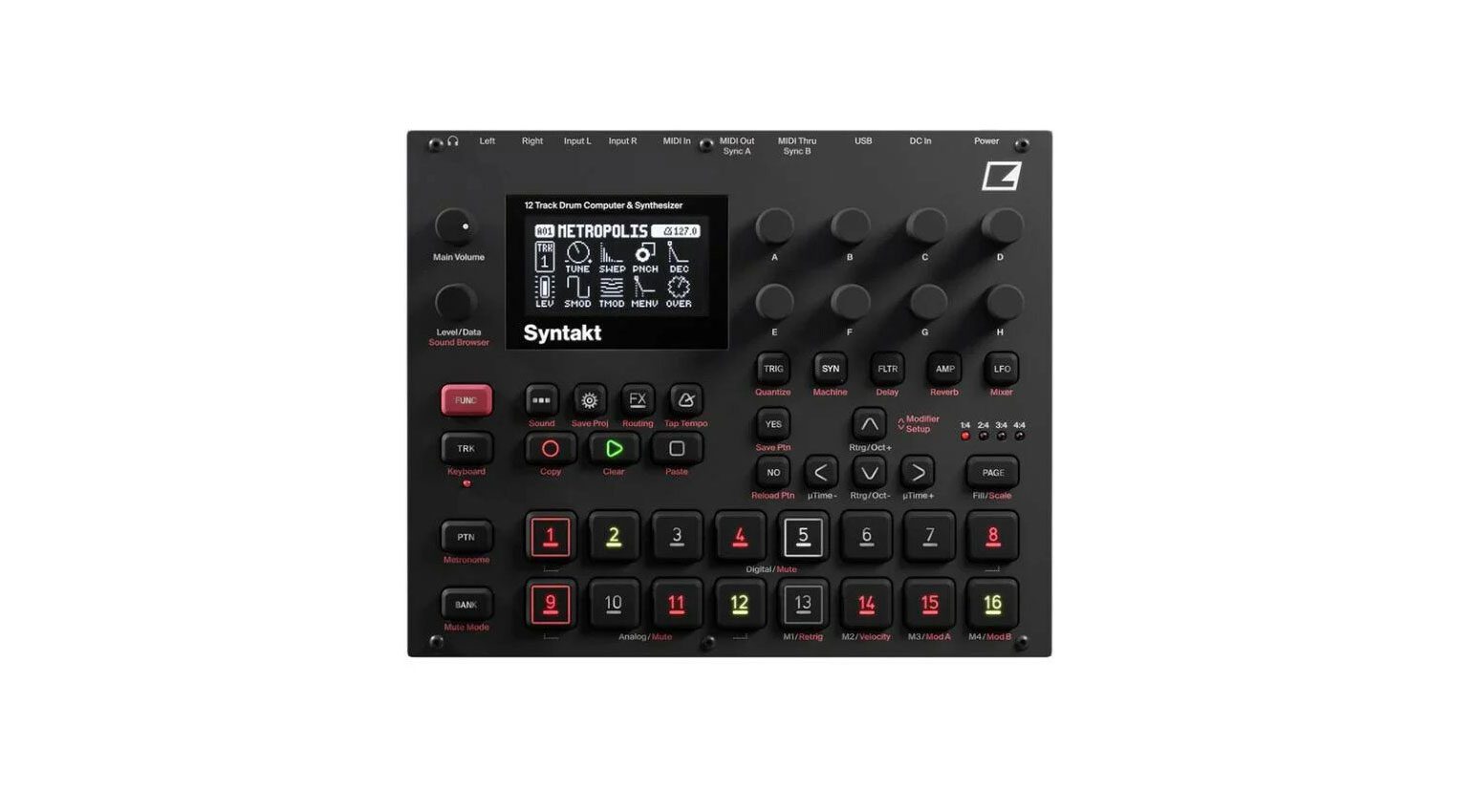
Syntakt (£849/$999) is the latest addition to Elektron’s mid-priced line of grooveboxes, joining the sample-focused Digitakt and Digitone FM synth. While the look and workflow is very similar to that of its two siblings, Syntakt stands out by being the first in the range to bring an element of analogue sound generation.
Want all the hottest music and gear news, reviews, deals, features and more, direct to your inbox? Sign up here.
In all, Syntakt packs 12 tracks, which can make use of a variety of analogue and digital sound engines. Some of the analogue sounds are ported over directly from the company’s top end Analog Rytm, while some digital sounds are based on the FM generators in the cheaper Model:Cycles - although these latter elements are beefed-up with additional sound shaping controls.
The overall sound palette covers the expected kicks, snares, claps, hats, etc, but also works in noise, impulse and tonal generators capable of more abstract or pitched percussive sounds and even melodic elements. Beyond the sound engines themselves, Elektron’s usual crop of powerful - if occasionally obtuse - workflow tricks are at play here, including per-step automation, probability sequencing and conditional triggers.
Dreadbox Dysmetria

Dysmetria (€200), from Greek analogue specialist Dreadbox is something of a shapeshifter. This DIY kit synth can be installed into a Eurorack system, fed a little CV and act like a conventional modular synth voice; alternatively you could pop it into its desktop housing and use it as a compact beatmaker. It manages this flexibility through a combination of punchy percussive synth elements, a loop-centric sequencer and plenty of CV patch points.
Sonically, Dysmetria isn’t a million miles away from Moog’s much-loved DFAM. Like that synth, the core sound here is provided by a pair of analogue oscillators. These are capable of being paired for basic FM sounds, and are joined by a white noise generator.
These elements feed into a 12db low/band-pass filter, capable of plenty of resonant bite, while two snappy decay envelopes help shape the sound. Put together it’s a great combo for synth kicks, raspy FM percussion or punchy basslines.
Roland Aira Compact T-8
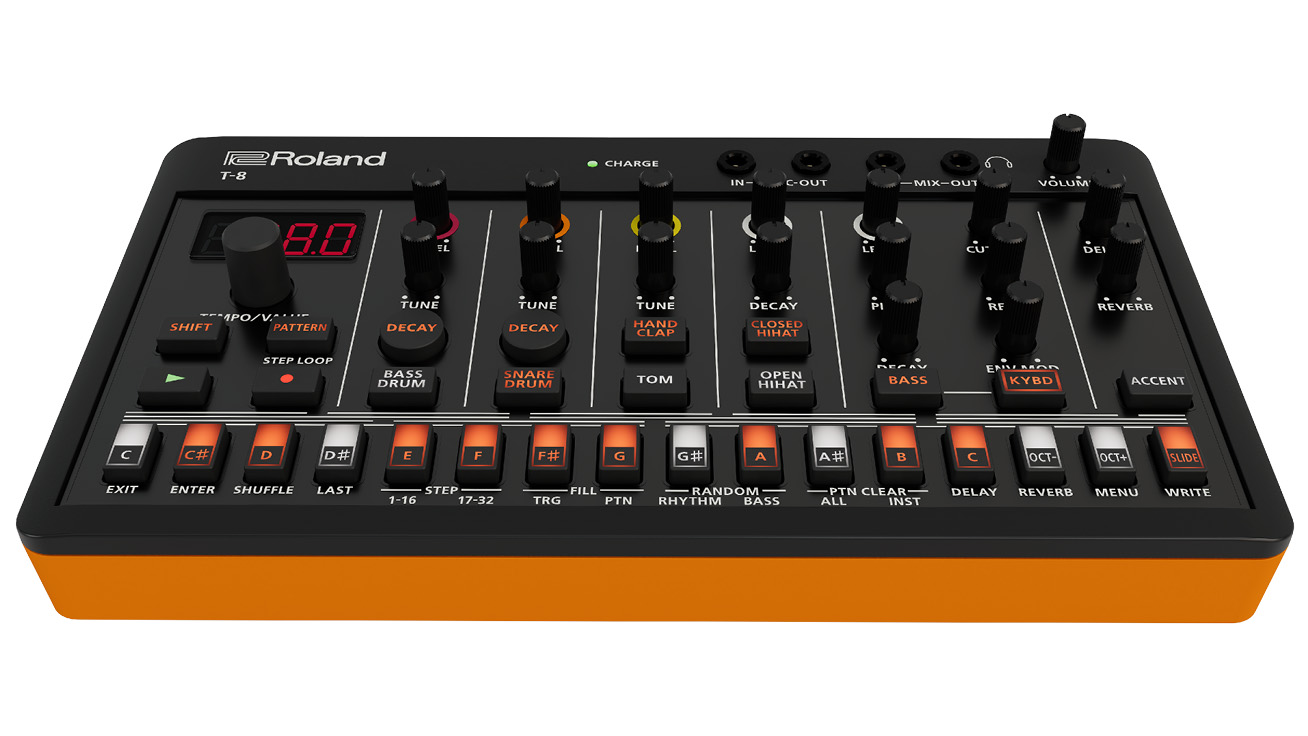
You’d be forgiven for having lost track of Roland’s retro-inspired offerings at this point. Between the Boutiques and Airas, modern Junos and Jupiters, Zen Core engines and Analogue Circuit Behaviour emulations, it can be tough to keep up with what any of it actually does (and that’s without even considering the software side of things).
Cutting through this complexity though, Roland’s new Aira Compact range looks to offer some of the most straightforwardly appealing instruments the brand has released in some time. The T-8 ($200/£170) is the beat-focused instalment of that range, sitting alongside the synth-focused J-6 and E-4 vocal processor.
This is a six-track groovebox that channels Roland’s iconic 909, 808 and 707 (yes, another one), but appealingly, it also adds a 303-inspired bass part. The 32-step sequencer looks simple to use but fun, too, with some neat creative tricks such as step looping, probability and pattern shifting.
Given it’s small size and wallet-friendly price, this could be the convenient source of vintage Roland beats you’ve been waiting for.
Teenage Engineering OP-1 Field

Should we call the OP-1 Field a groovebox? Maybe? It can do beats among its many other tricks – from synthesis to sampling to acting as an FM radio. Its compact form factor, loop-focused recorder and general workflow certainly make it groovebox adjacent, if not a groovebox or drum machine in the traditional sense.
Over ten years on from the release of the original, Teenage Engineering’s remarkably popular breakthrough product is back with a refreshed new version. Its creators describe it as being “louder, thinner and 100 times better” - that figure relating to the 100 new features TE has apparently added.
That century of updates includes major tweaks such as a new synth engine, fully stereo signal chain and ability to broadcast from the FM radio. There are also aesthetic tweaks including a new improved screen and subtly modernised look. The improvements come at a price, though – the OP-1 Field (£1999) costs well over twice the original £799 launch price of the OG OP back in 2011.
Erica Synths Perkons HD-01

You may well feel like you’ve heard about Perkons (€1650/$1999) before. This latest hybrid drum machine from Latvia’s Erica Synths was launched back in September, and at the time scheduled for a release in late 2021. Unfortunately, production delays tied to global supply chain issues has kept the instrument on ice - although it’s finally up for pre-order and due to begin shipping within the next couple of months.
Will it be worth the wait? Based on our early demos last year, we’ve high hopes for this one. Named after an ancient god of thunder, Perkons is a multitrack beatmaker that combines digital sound generation with analogue, overdrive-equipped filters. There’s also a range of analogue effects, which include a BBD-style delay and optical compressor.
There appears to be plenty of flexibility on offer from the sequencer and modulation tools, too. Highlights include morphable LFOs, per-step ratchets and probabilities, plus plenty of flexibility over each individual track’s length and timings.
Korg Drumlogue
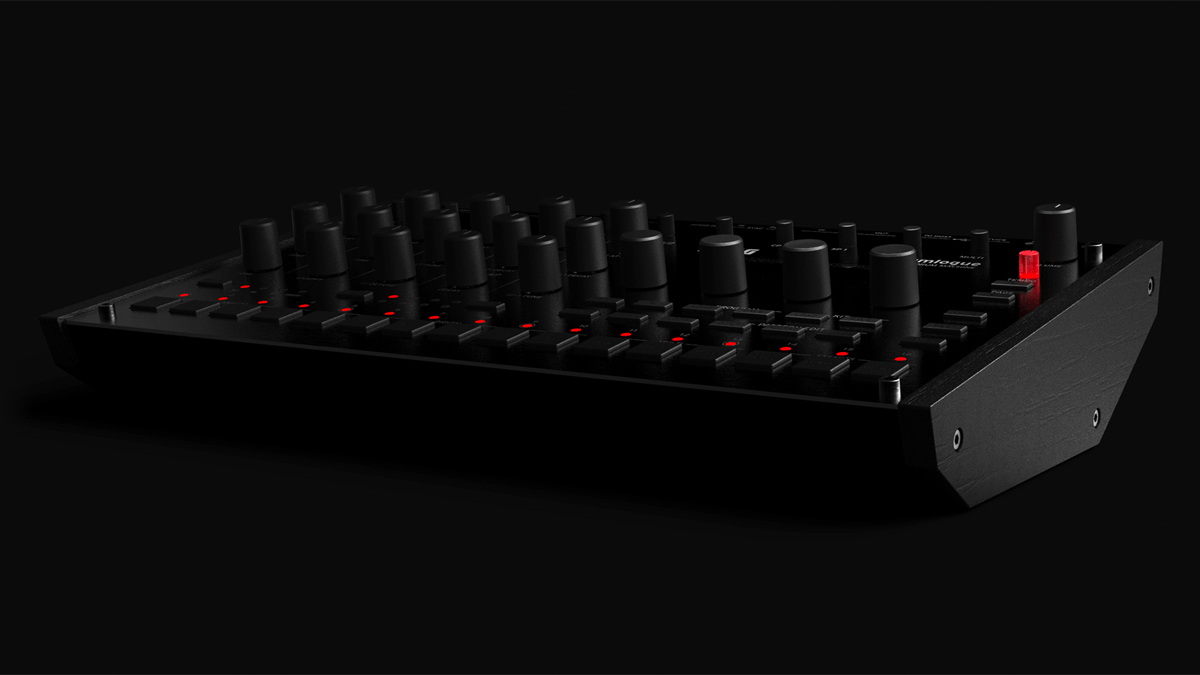
If you think Perkons has been a long time coming, it’s got nothing on Korg’s long-awaited Drumlogue. This one was first teased back in January 2021 and there’s not been a peep on the matter from Korg since then.
While we’re still waiting on a full reveal, there are a few facts that we do know from that initial announcement. We’re told that this desktop beatmaker will cover a broad sonic spectrum thanks to a combination of analogue and digital sound generators. What’s more, Drumlogue is promised to include a flexible effects section, assignable outputs and a performance-friendly interface.
As with its Minilogue XD and Prologue siblings, the Drumlogue is also set to include an element of user-customisation thanks to the open 'Logue SDK.
Will we have a Drumlogue in our hands before the end of 2022? At this point it’s anyone’s guess – we hold out hope, though.
Twisted Electrons Blast Beats
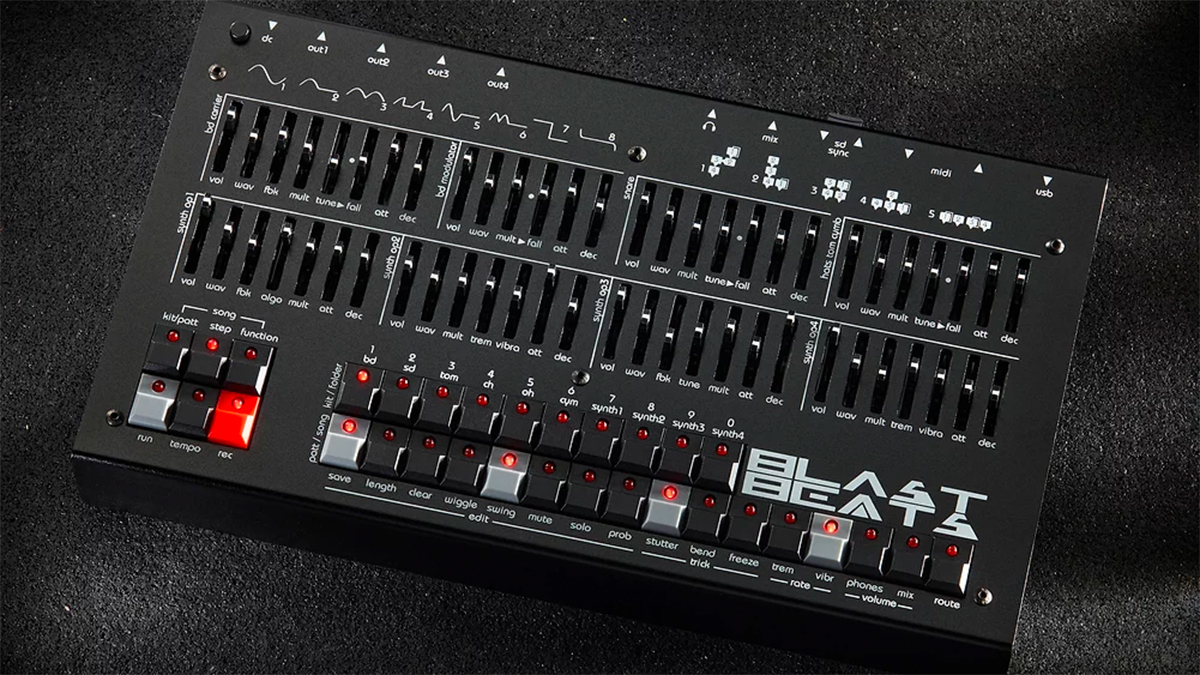
Blast Beats (€599) from Twisted Electrons is a retro-inspired groovebox. ‘Another one?,’ we hear you ask. Yes - but Blast Beats stands out from the crowd by ploughing a slightly different vintage furrow to the multitude of 808 or 909-alikes out there.
The source material here is a vintage FM chip called YMF-262, found in DOS-era computers of the early ‘90s. The result is a sonically gritty, digital synth that can handle both punchy drum sounds and rich melodic grooves.
While the original chip being used was notoriously awkward to program back in the day, Twisted Electrons has thankfully paired it with a modern, fader-packed interface that offers a bucketload of hands-on control (while still looking pleasingly retro.)
Each parameter can also be automated and modulated per step. There are 100 kits, and the step sequencer enables you to create 160 songs with 16 patterns and 64 steps (storage is on an included SD card).
I'm the Managing Editor of Music Technology at MusicRadar and former Editor-in-Chief of Future Music, Computer Music and Electronic Musician. I've been messing around with music tech in various forms for over two decades. I've also spent the last 10 years forgetting how to play guitar. Find me in the chillout room at raves complaining that it's past my bedtime.